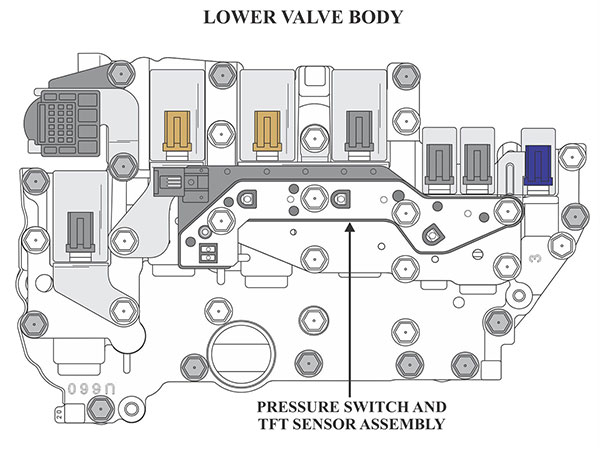The complaint
A 2010 Toyota Venza equipped with the 3.5-liter engine and the U660E transmission has a complaint of setting trouble codes P0872 “TFP Switch C” and P0877 “TFP Switch D.” The pressure switch assembly was ordered from the dealer. As a side note, the car came from a used car dealer. The transmission appeared to function normally.
The cause
The location of the pressure switch assembly can be seen in figure 1 (above). When the pressure switch assembly was removed from the valve body, it was noticed that the assembly contained only one pressure switch (refer to figure 2).
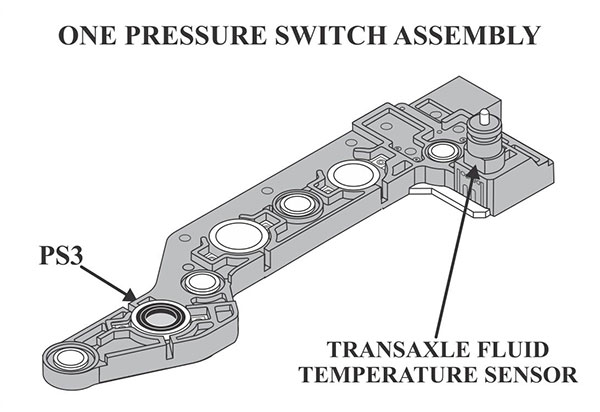
The pressure switch assembly from the dealer contained three pressure switches (refer to figure 3). This vehicle being a 2010 model means that it should have three pressure switches, as is true for 2007 through 2011 model years.
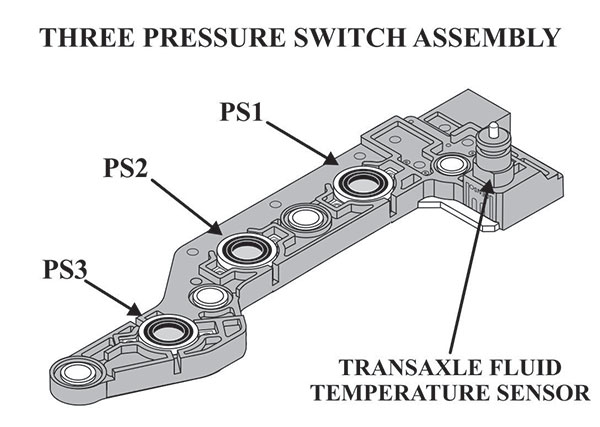
Further inspection of the valve body revealed that a valve body plate had only one feed passage as seen in figure 4. To operate three pressure switches, the valve body plate would require three feed passages as seen in figure 5.
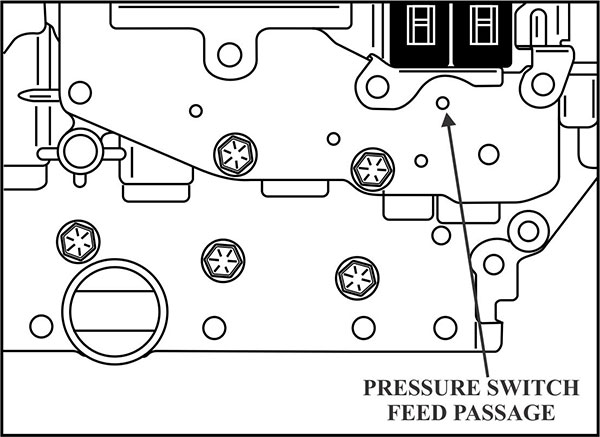
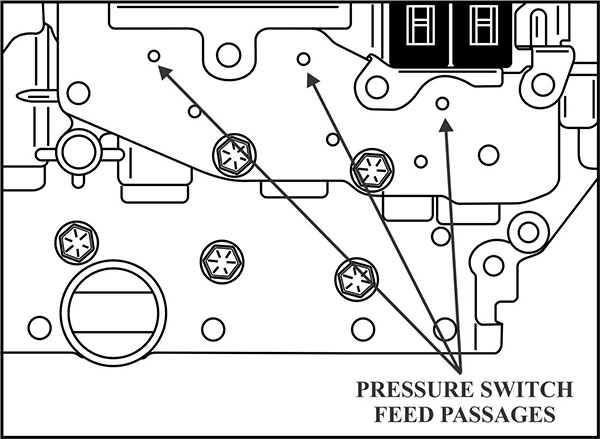
The pressure switch feed plates for one and three pressure switches can be seen in figures 6 and 7.
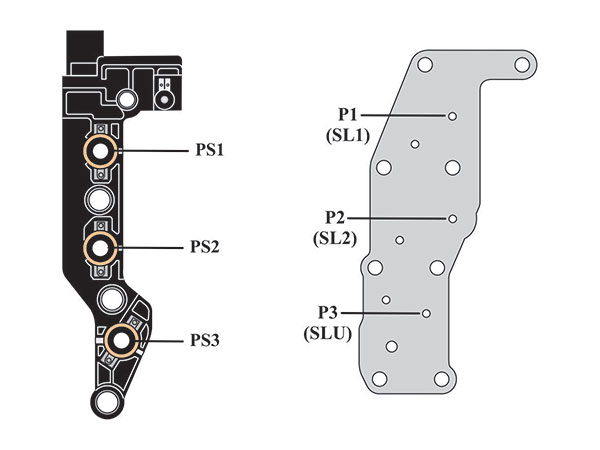
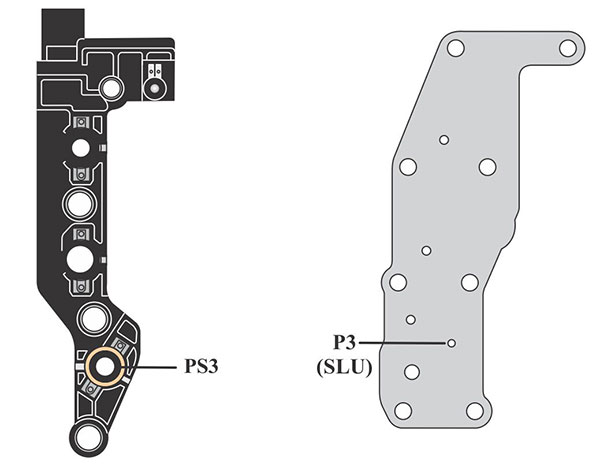
Therefore, it would seem that someone installed an entire valve body assembly from a 2012 or later vehicle, and this is what caused the codes to set due to the fact that the TCM had circuitry for all three pressure switches. The internal wire harness had only three wires instead of five—one for the pressure switch and two for the transmission temperature sensor.
This means that only pressure switch 3 was connected to the TCM while pressure switches 1 and 2 were open circuits.
The correction
The correct valve body assembly was installed into the vehicle and the codes were cleared. During the road test the pressure switch codes did not return.

